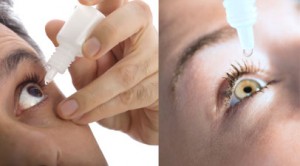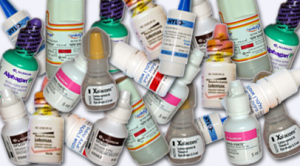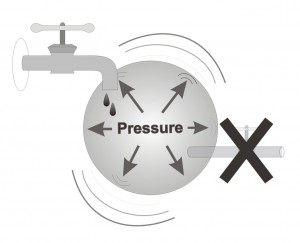This medication is similar to other beta-blockers, and is identical to Tiloptic (Timolol), except for the fact that the active material is in the form of a gel. As a result, absorption by the eye is much better and there are less side-effects (read the side-effects listed for Tiloptic and beta-blockers). Because of the advantageous characteristic of increased absorption, the medication is prescribed only once a day (in the morning!) and additionally, it is much less concentrated than Tiloptic. In fact, while Tiloptic is 0.5%, the concentration of Nyolol Gel is only 0.1%. Despite this large difference in concentration of the active medicine, their effect on the reduction of intraocular pressure is similar.
What, if so, is gel?
These are eye-drops that are so viscous that one has to press the bottle strongly in order to allow one drop to be squeezed out and instilled into the eye. The gel is more or less similar in viscosity to honey.
One might ask, why give beta-blockers in drops when it is possible to administer them as gel?
On the one hand, administration as gel has a number of benefits:
- Once a day dosage as opposed to twice a day.
- A significantly lower concentration. (0.1% instead of 0.5%)
- A similar effect on reduction of intra-ocular pressure.
- The gel is similar in composition to ointments used for dry eyes so the patient gains the added effect of lubricating the eyes, beneficial for dry eyes.
On the other hand, there are a number of disadvantages:
- The price is higher and this type of drop is not necessarily fully covered by standard medical coverage, and hence might be slightly more expensive for the patient.
- Immediately following the placement of any gel, vision is blurred for a few minutes until the gel dissolves and spreads evenly over the eye. This is analogous to spreading honey over a window and noticing that the view through the glass is not as transparent as it was before.
- After the gel dries it leaves small crystals on the eyelashes. Some patients find this bothersome and noticeable by others.
- A small percentage of patients feel that the gel is less comfortable in their eyes as compared to drops (Tiloptic as opposed to Nyolol gel), however most patients find the gel suitable.
Therefore, the final decision should rest in the patient’s hands. Whichever they find easier and more comfortable to use is fine with me, because the pharmacological effect (reduction of intra-ocular pressure) is the same for the drop as compared to the gel.



